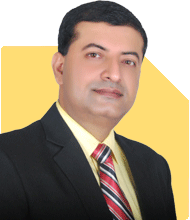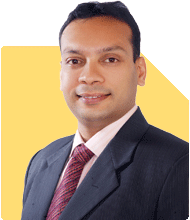Shekhar Kumar | Answer |Ask -Follow
Leadership, HR Expert - Answered on Apr 15, 2024
He has also mentored middle and senior management professionals for leadership positions and guided them in career development.
Shekhar has a bachelor's degree in business management from Magadh University, Bihar, and a master's degree in human resource management from Annamalai University, Tamil Nadu.... more

I have completed B.Tech in CS (Specialization in software designing) in 2021 and facing job crises problem. How many years this problem continued and in future is there any future in software designer.
These technical skills and job roles reflect the ongoing progress of the software design field and the increasing demand for engineers who can innovate, adapt, and leverage these technologies to create impactful software solutions for the future. Best of luck! Feel free to contact me on Rediff Gurus if you need further assistance or help.
You may like to see similar questions and answers below
Chocko Valliappa |544 Answers |Ask -Follow
Tech Entrepreneur, Educationist - Answered on May 23, 2023
Chocko Valliappa |544 Answers |Ask -Follow
Tech Entrepreneur, Educationist - Answered on Mar 27, 2024
Krishna Kumar | Answer |Ask -Follow
Workplace Expert - Answered on Mar 26, 2024
Nayagam P P |10859 Answers |Ask -Follow
Career Counsellor - Answered on Sep 24, 2024
Ramalingam Kalirajan |10906 Answers |Ask -Follow
Mutual Funds, Financial Planning Expert - Answered on Dec 19, 2025
Nayagam P P |10859 Answers |Ask -Follow
Career Counsellor - Answered on Dec 19, 2025
Ramalingam Kalirajan |10906 Answers |Ask -Follow
Mutual Funds, Financial Planning Expert - Answered on Dec 19, 2025
Ramalingam Kalirajan |10906 Answers |Ask -Follow
Mutual Funds, Financial Planning Expert - Answered on Dec 19, 2025
Ramalingam Kalirajan |10906 Answers |Ask -Follow
Mutual Funds, Financial Planning Expert - Answered on Dec 19, 2025
Radheshyam Zanwar |6751 Answers |Ask -Follow
MHT-CET, IIT-JEE, NEET-UG Expert - Answered on Dec 19, 2025
Radheshyam Zanwar |6751 Answers |Ask -Follow
MHT-CET, IIT-JEE, NEET-UG Expert - Answered on Dec 19, 2025
Samraat Jadhav |2514 Answers |Ask -Follow
Stock Market Expert - Answered on Dec 18, 2025
Reetika Sharma |432 Answers |Ask -Follow
Financial Planner, MF and Insurance Expert - Answered on Dec 18, 2025
Reetika Sharma |432 Answers |Ask -Follow
Financial Planner, MF and Insurance Expert - Answered on Dec 18, 2025
























